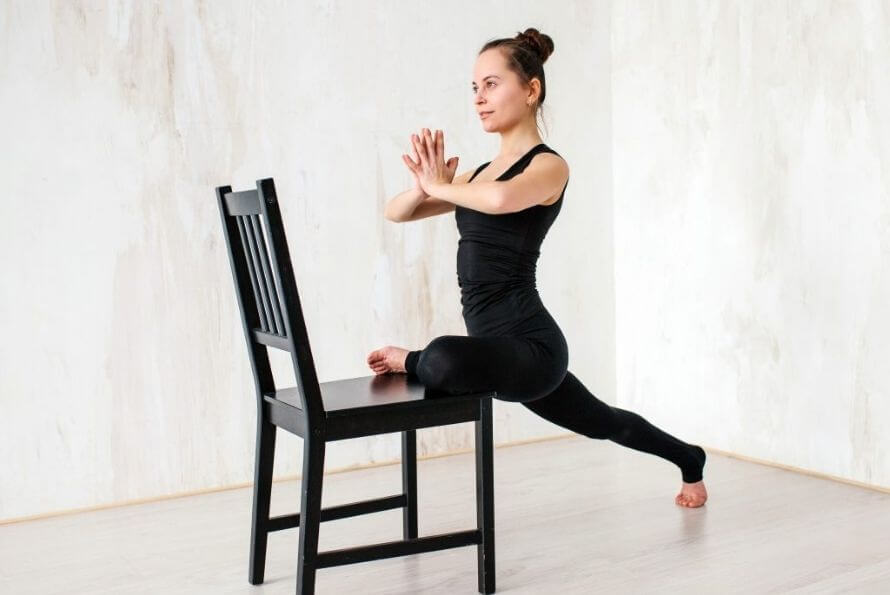Chair yoga
Chair yoga is a general term for practices that modify yoga poses so that they can be performed while sitting in a chair. These modifications make yoga accessible to people who are unable to stand, lack the mobility to move easily from standing to sitting or lying down, or who want a quick break from their desk job.
Most of the basic body mechanics of the various postures remain the same. Sitting in chairs, students can do versions of twists, hip stretches, forward bends and slight backbends.
In addition to a good stretch, chair yoga participants can enjoy the other health benefits of yoga, including improved muscle tone, better breathing habits, reduced stress, better sleep and an increased sense of well-being.
Who practices chair yoga?
Chair yoga can be practiced by anyone who wants to enjoy the benefits of yoga and has limited (or no) mobility. For example, chair yoga is ideal for people who need more support, are dealing with an injury or want a more therapeutic approach to the practice.
Chair yoga classes are widely available in senior centers and retirement communities, as seniors are the primary target audience. But obese people and people with neurological diseases are also good candidates for chair yoga. Office workers can also take advantage of chair yoga adaptations to stretch at work.
Chair yoga is an ideal exercise for people with physical problems such as :
- chronic pain,
- carpal tunnel syndrome
- osteoporosis
- multiple sclerosis.
It can also be beneficial for people of a certain age who have difficulty performing the up and down movements of traditional yoga. Chair yoga allows them to remain stable.
Chair yoga offers a myriad of benefits, including increased flexibility, weight loss and improved mental state. It is especially important for seniors to incorporate practices such as chair yoga into their routine.
According to physiotherapists, there are 4 phases of degeneration that progress naturally with age. Physical exercise is a major solution to slow down this process. If a joint cannot move in its normal range of motion, it will limit the amount of activity one can do.
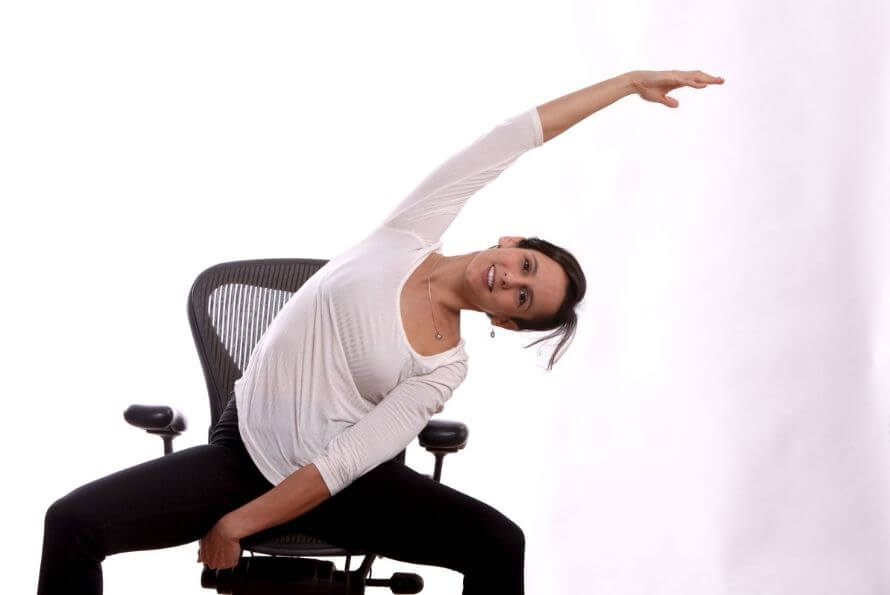
For many people, a gym membership is not enough to make up for eight hours of sitting at a desk. Many people try to introduce physical activity levels into their office or workspace.
These include standing desks, stability balls, and brisk walks around the office every 15 to 30 minutes. In addition to these daily practices, why not try chair yoga? According to one study, chair yoga, in addition to offering many physical benefits, can relieve stress and tension at work.
This study found that the mindful practice of chair yoga helped improve self-care and prevent burnout.
In addition to office practice, chair yoga exercises during a long flight can relieve discomfort and mitigate the potential risk of blood clots.
What are the benefits of practicing yoga sitting in a chair?
The benefits of an active lifestyle are widely documented. So it can be incredibly frustrating when age, illness or injury make exercise difficult. Fortunately, chair yoga is both safe and effective. What are the benefits of chair yoga?
The ability to bend, twist, stretch and move freely is not only important for doing yoga. It allows you to do what you need to do and to engage in the activities you love.
Although some people think that a loss of flexibility is inevitable as they age, they are wrong. When it comes to flexibility, the rule is "use it or lose it". By challenging your body with chair yoga, you can increase your flexibility and improve your mobility.
Using your muscles to perform yoga poses develops your strength. Greater strength can lead to better balance, which can reduce the risk of falling.
It can also improve your body's ability to resist injury.

Doing yoga usually means moving smoothly from one pose to another. Moving from one pose to another improves your proprioception.
What is proprioception? It is your ability to accurately perceive your body's position in space.
With better proprioception, your coordination improves. In addition, your risk of falling is reduced.
Mindfulness is an integral part of yoga. Focusing on your movement, breathing and your body's response to exercise creates a kind of moving meditation that promotes relaxation, reduces stress and improves mental clarity.
Like other forms of exercise, chair yoga can also help improve mood and relieve problems such as anxiety and depression.
Researchers have repeatedly shown that one of the benefits of exercise is the reduction of pain. This is because exercise prompts the body to release natural painkillers like endorphins.
Practicing chair yoga allows you to take advantage of this natural form of pain relief.
Maintaining a regular exercise routine is often associated with better sleep, and chair yoga is no exception.
The effort involved in this exercise can help you be ready to rest, and the reduction in stress and pain that comes with it can reduce the risk of these discomforts disrupting your ability to get a good night's sleep.
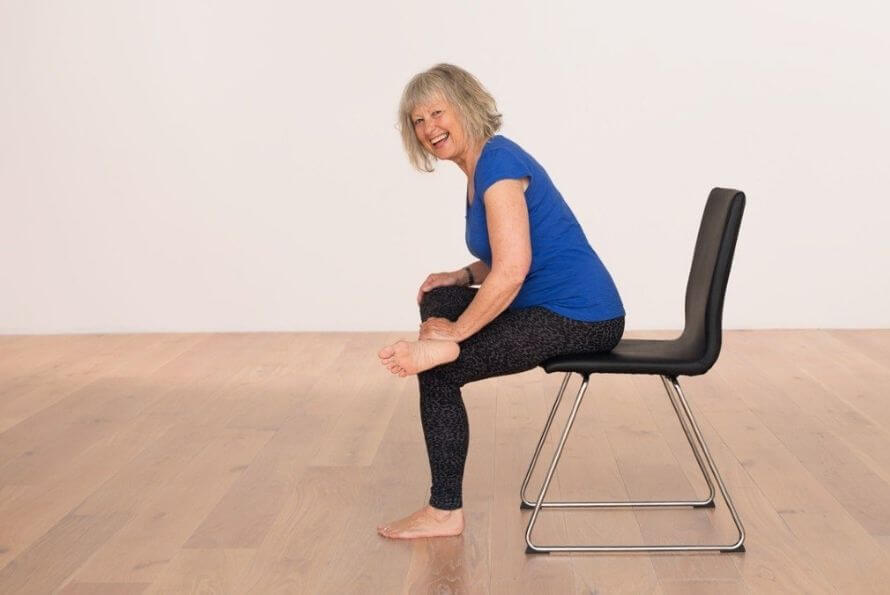
How to practice chair yoga?
Since chair yoga is all about adaptability, it's no surprise that it doesn't matter what chair you use. You don't have to run out and buy a specialized yoga chair. Chairs with wheels are not ideal because they are unstable, but almost any other chair will do. If you're on the shorter side, place blocks or a folded yoga mat under your feet to give you a solid base.
Top 11 best chair yoga positions :
Chakravakasana
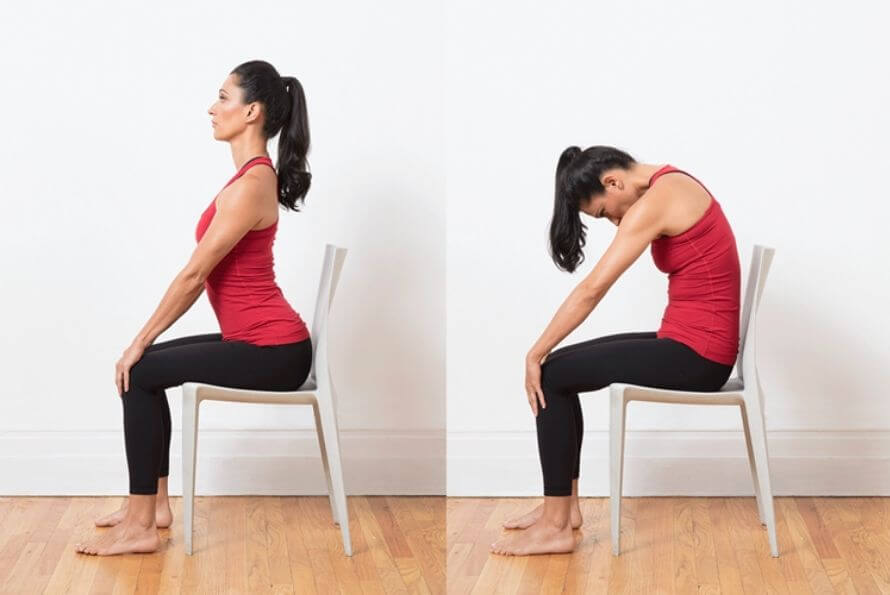
Sit in a chair with your spine stretched and both feet on the floor. Place your hands on your knees or upper thighs. Inhale, arch your spine and roll your shoulders down and back, bringing your shoulder blades to your back. This is the cow position.
On the exhale, wrap your spine around and rest your chin on your chest, leaving your shoulders and head forward. This is cat pose. Continue moving between cow pose on the inhale and cat pose on the exhale for five breaths.
Urdhva Hastasana
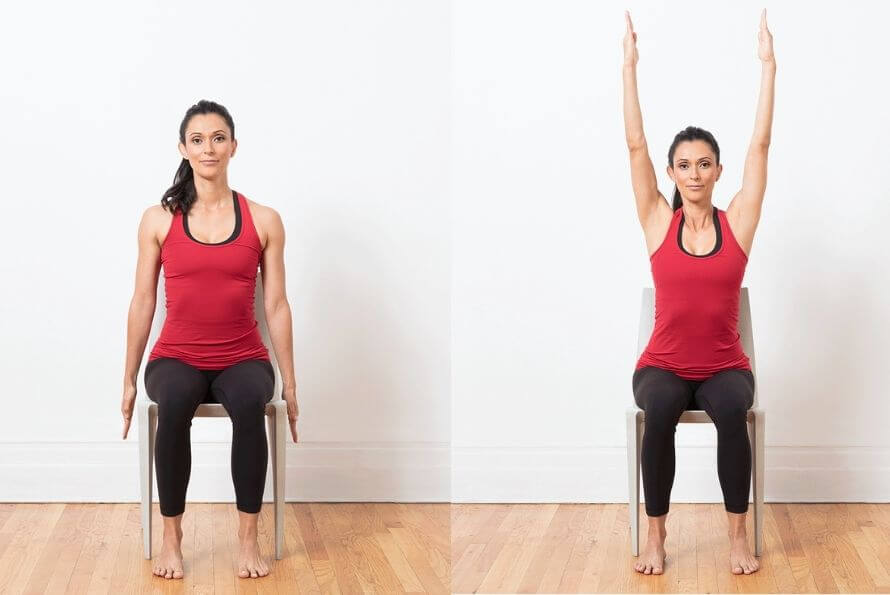
On an inhale, raise your arms toward the ceiling. Maintain good upper body posture with shoulders relaxed and rib cage resting naturally on hips. Anchor your bones in the seat of your chair and raise your arms from there.
Uttanasana
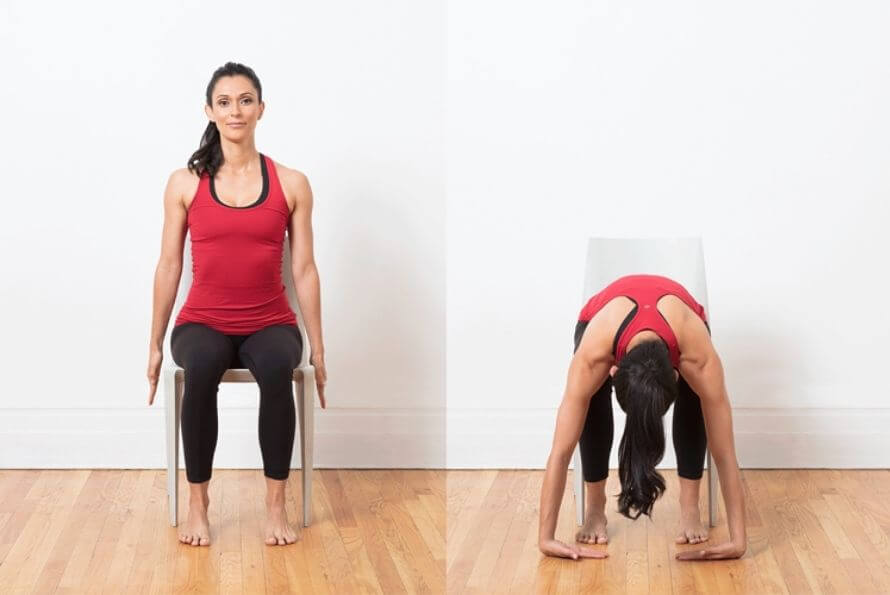
On an exhalation, bend forward on the legs. Let the hands rest on the floor if they reach it. Let the head hang heavily. On an inhalation, raise the arms above the head. Repeat this movement between the raised arms position and the forward bend several times, moving with the breath.
Utthita Parsvakonasana
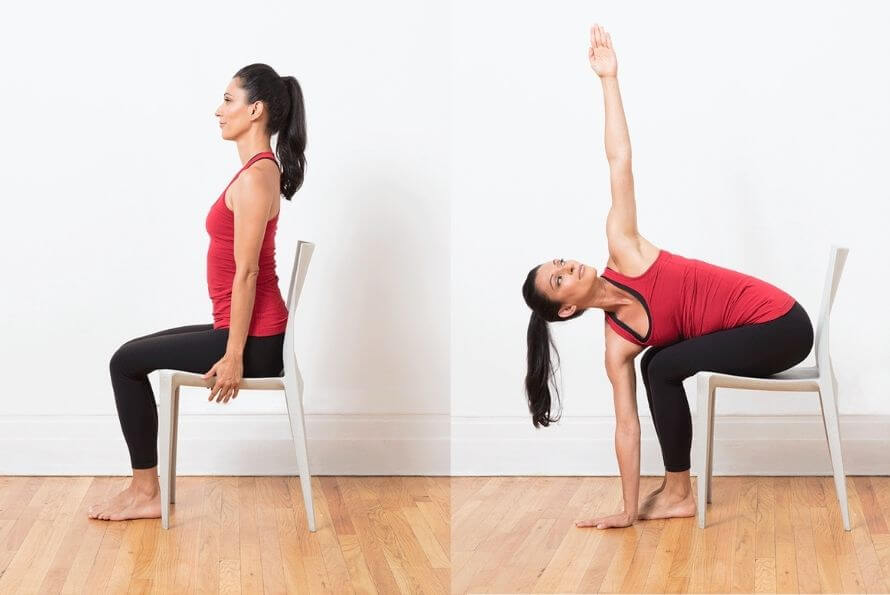
After your last forward bend, stay bent. Bring your left fingertip to the floor on the outside of your left foot. If your left hand doesn't easily touch the floor, place a block under it or bring it to your left knee instead and turn from there.
Open your chest by turning to the right on an inhale, bringing your right arm and gaze to the ceiling. This is the chair version of the extended side angle pose. Hold this position for several breaths. Bring your right arm down as you exhale. Do the same position with the right arm down and the left arm up.
Eka Pada Rajakapotasana
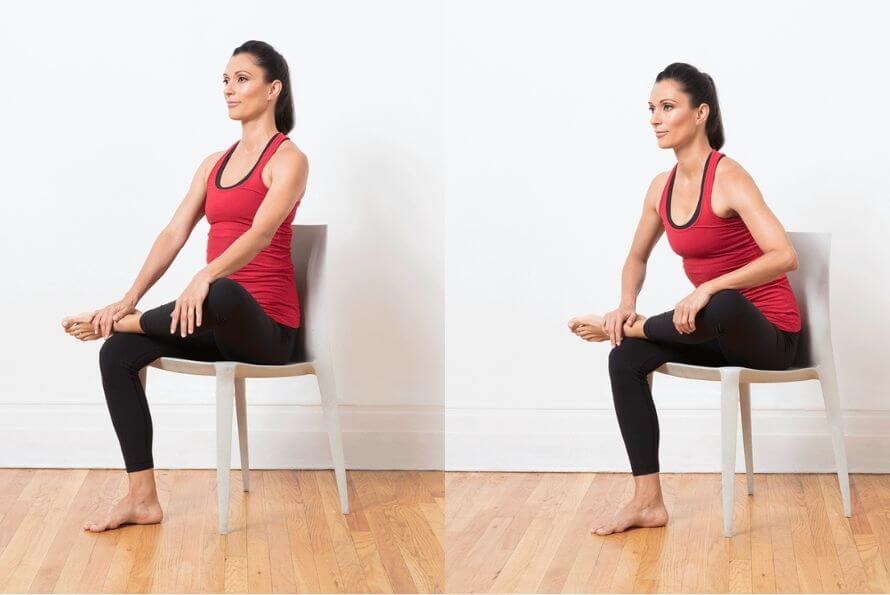
Return to a sitting position. Bring your right ankle to rest on your left thigh, keeping the knee in line with the ankle as much as possible. Hold this chair pigeon for three to five breaths.
You can lean forward to intensify the stretch if you wish. Repeat the exercise with your left leg.
Garudasana
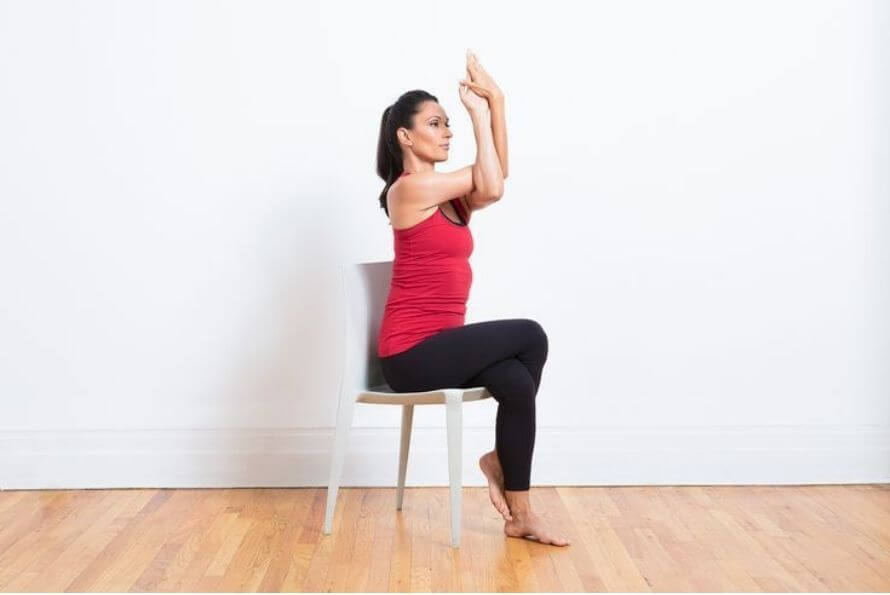
Cross your right thigh over your left thigh for the eagle pose. If you can, wrap your right foot around your left calf.
Cross your left arm over your right arm at the elbow. Bend your elbows and bring your palms to touch. Raise your elbows while pulling your shoulders away from your ears. Hold for three to five breaths. Repeat on the other side.
Ardha Matsyendrasana
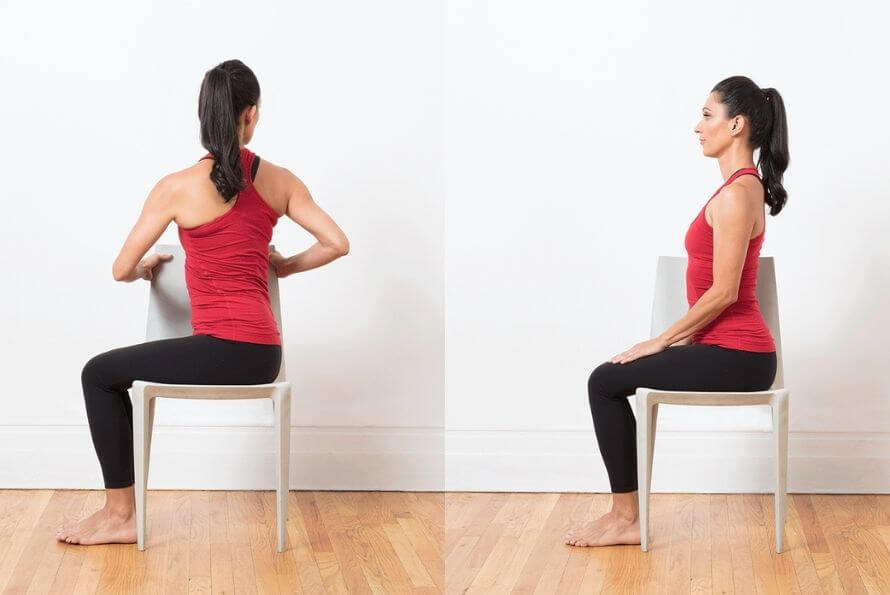
Come and sit sideways on the chair, facing left. Turn your torso to the left, holding onto the back of the chair, for a spinal twist.
Lengthen your spine with each inhale and twist with each exhale for five breaths. Move your legs to the right side of the chair and repeat the twist to the right side.
Virabhadrasana
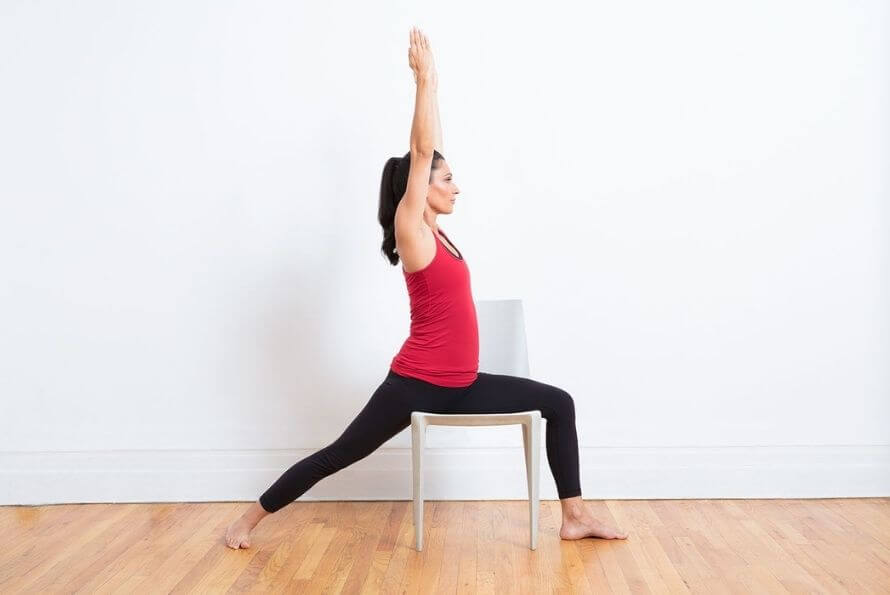
Now keep the right leg in position on the side of the chair while you swing the left leg behind you.
Place the sole of the left foot on the floor roughly parallel to the seat of the chair and straighten the left leg. Keep the torso facing the right leg as you raise your arms toward the ceiling on the Warrior I breath. Hold for three breaths.
Virabhadrasana II
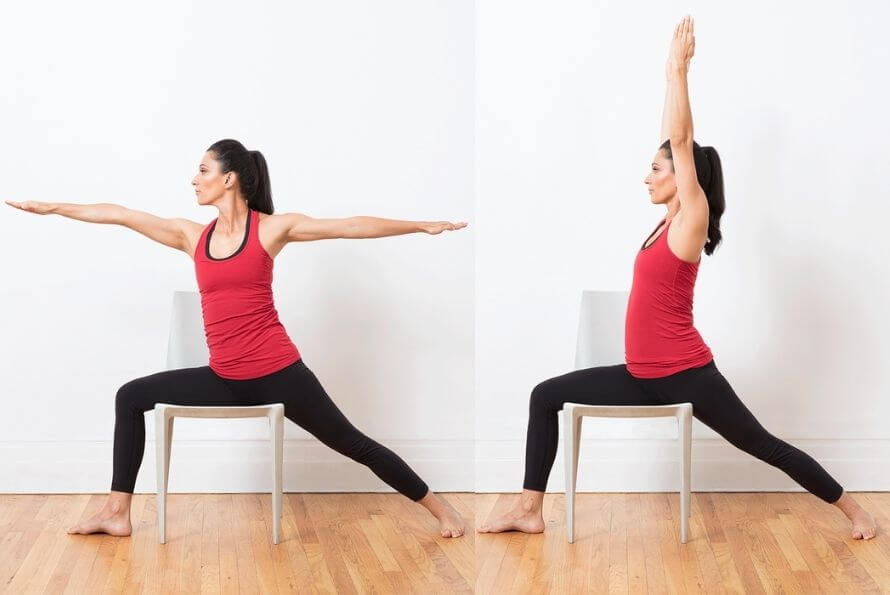
On the exhale, open the arms, right arm forward and left arm back.
Bring the left hip back and turn the torso to the left, so that it is in line with the front of the chair. Look at the right fingertips and hold Warrior II for three breaths.
Warrior reverse
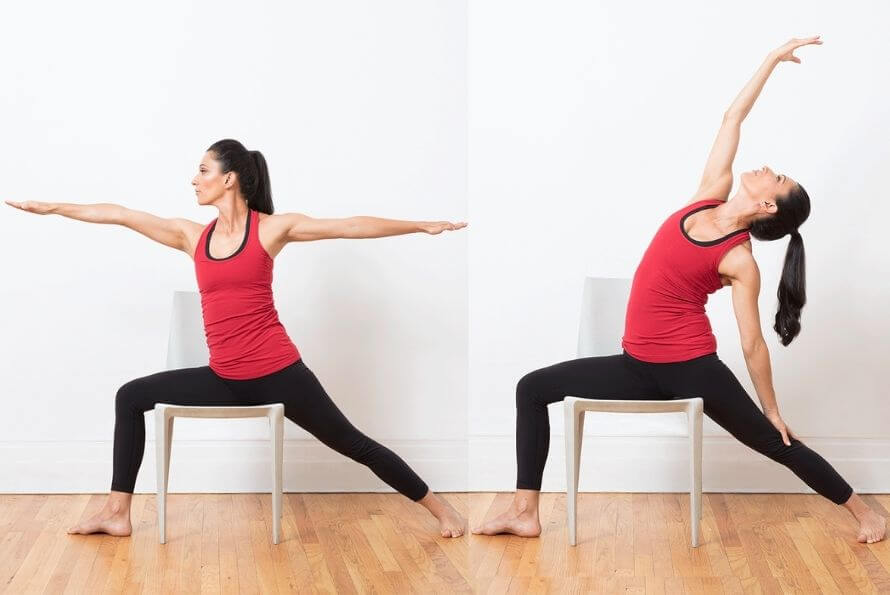
Let the left arm drop down the left leg and lift the right arm to the ceiling for a reverse warrior breath. Hold for three breaths.
Bring both legs to the front of the chair before coming to sit on the side of the chair facing left and taking the series of three warrior poses on the left side.
Sitting savasana
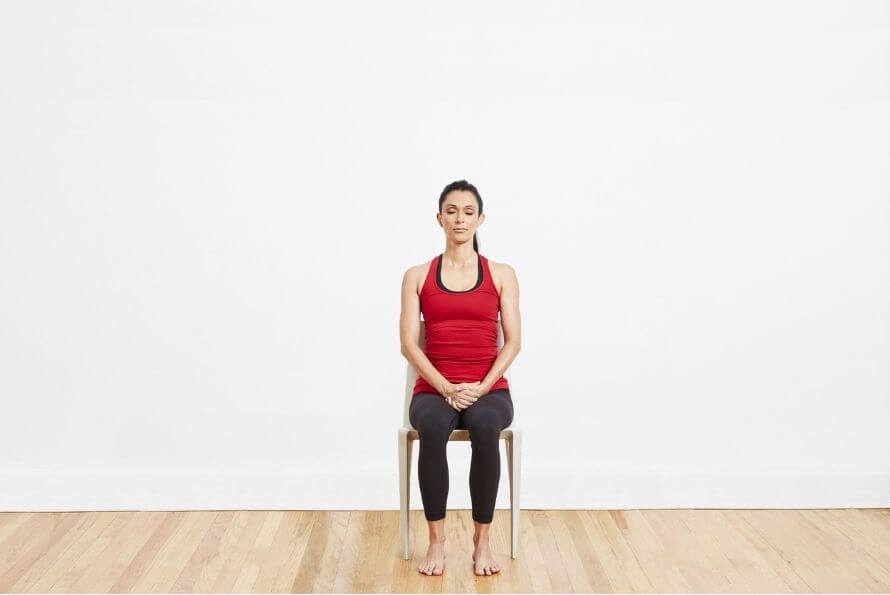
Take a few minutes to sit with your eyes closed and your hands in your lap at the end of your workout. This sitting savasana will help your body absorb all the good effects of the poses you did and allow you to move on to the rest of your day.


